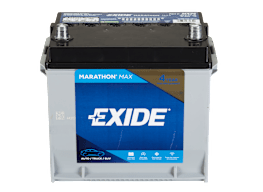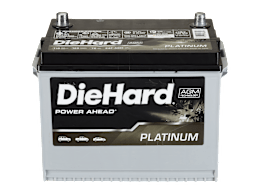
Car Battery Buying Guide
The day your car won’t start isn’t the best time to shop for a new car battery. But according to our research, that’s exactly what most people do.
You will probably have to replace the car battery once or twice during the life of your vehicle because it gets old or worn out from exposure to heat and repeated charging and discharging. A dead battery can be a real hassle, especially if you can’t find your jumper cables or have to wait for roadside assistance.
Taking care of your battery can help get the most service life from it, and being attentive to its condition and age can signal when it is time to begin shopping for a replacement … before you are left stranded.
Below are tips for getting the best battery for your needs.
Check Under the Hood
Be Proactive
Being attentive to your battery’s maintenance and mindful when the time for replacement is approaching will ensure that you can choose a replacement on your own terms, including properly researching and conveniently scheduling.
Test Batteries Annually
Inspections should be part of an owner’s routine maintenance, but it is especially important to check before taking a long road trip.
True maintenance is largely a thing of the past. Almost all of today’s car batteries are "maintenance-free." However, we recommend having your battery load-tested by a mechanic annually once it is 2 years old if you live in a warmer climate or 4 years old if you live in a colder climate. Doing so tests its ability to hold voltage while being used, and the results will let you know when it’s time to start shopping.
In addition, check the terminals to ensure the connectors are tight and free from corrosion.
Car batteries typically last from three to five years, according to AAA, spanning from 58 months or more in the farthest northern regions of the U.S., down to less than 41 months in the most southern regions.
The battery’s age is also a strong indicator that it’s time to consider a replacement. The date can be found on a sticker affixed to the top or side of the battery. A battery made in October 2022 will have a numeric code of 10/22 or an alphanumeric code of K-1. "A" is for January, "B" is for February, and so on (the letter "I" is skipped).
A Battery Should Fit Your Car and Driving Needs
Car batteries come in many sizes. Among those that we have tested, there’s significant variation in which is the top performer from year to year, and from size to size. This makes it impossible to make simple recommendations by brand or model. It also means you shouldn’t assume that buying the same battery model you are replacing will get you the same results.
Make sure you get the right size and terminal locations (or type) for your vehicle. Check your owner’s manual or an in-store fit guide before shopping.
In some cases, owners can replace an AGM battery with a traditional flooded one to boost longevity in hot climates, but it’s best to consult a mechanic first. Many cars come with AGMs to support an increasing array of electrical components, and the charge system may be configured specifically for an AGM battery.
Make Sure It’s a Fresh Battery
Batteries lose strength over time, even when in storage. For optimum performance, purchase one that is less than 6 months old. Three months is even better. Most have a shipping code on the case, as explained above.
Recycle Your Old Battery
A battery’s toxic lead and acid can easily be recycled, and most retailers will dispose of the old one for you. When buying a new battery at a store, you will probably pay an extra charge that will be refunded when you return the old battery. This serves to motivate the car owner to drop off the old battery. About 90 percent of car batteries are truly recycled, making them a recycling success story.
Compare Warranties
It is important to choose a battery with the longest free-replacement period you can get. A battery’s warranty is measured in two figures: the free-replacement period and the prorated period—which allows only partial reimbursement. A code of 24/84, for example, indicates a free-replacement period of 24 months and a prorated warranty of 84 months. But the amount you’ll be reimbursed usually drops off pretty quickly once you’re in the prorated period.
Be aware that signs of neglect—such as low water levels and improper installation—can void a warranty. So can heavy-duty use, such as for high-end car audio and marine applications, if the battery is not recommended for it.
Get to Know the Battery Types
Car batteries come in two basic varieties: the more traditional maintenance-free and the more advanced absorbed glass mat (AGM).

Lead-Acid (Regular)
Batteries once required drivers to periodically top off the water in the electrolyte solution, the liquid inside that is the battery’s power source. Modern maintenance-free batteries consume far less water than traditional “flooded cell” ones. Low-maintenance batteries retain their fluid for the life of the battery, and the caps on these models aren’t meant to be removed. There are still some batteries that can be topped off with distilled water; properly maintained, these may last longer in hot climates.
A lead-acid battery will generally cost significantly less than an absorbed glass mat battery. However, it will not hold a charge for as long and is less able to tolerate a deep discharge.
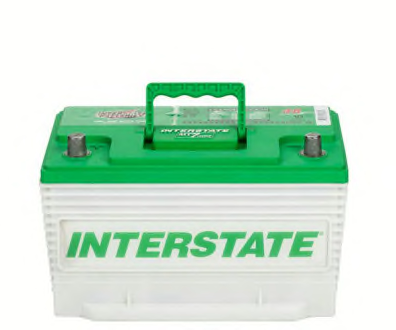
Absorbed Glass Mat (AGM)
AGMs are built to better stand up to repeated draining and recharging cycles than standard batteries. They are becoming standard equipment in more cars because modern features such as fuel-saving stop-start systems, electronic safety and convenience features, and power outlets for mobile electronics all increase the demand for power.
But AGMs can cost 40 to 100 percent more than highly rated conventional batteries. Consider buying one if you sometimes don’t use your vehicle for long periods and the battery loses its charge. An AGM battery can better tolerate a deep discharge, and it is more likely to fully recover if it is accidentally drained.
Get the Right Fit
Batteries come in a variety of sizes. It’s important to choose the right one to ensure that it fits securely and provides sufficient power. If the terminals are in the wrong place, your car’s cables might not reach or they might not fit securely. Check your owner’s manual or an in-store fit guide. Many retailers will install the battery free of charge.
Size 24/24F (top terminal): Fits many Acura, Honda, Infiniti, Lexus, Nissan, and Toyota vehicles.
Size 35 (top terminal): Fits most Japanese nameplates, including many recent Honda vehicles and most Mazda, Nissan, Subaru, and Toyota vehicles.
Size 47 (H5) (top terminal): Fits many Buick, Chevrolet, Fiat, and Volkswagen models.
Size 48 (H6) (top terminal): Fits many vehicles from Audi, BMW, Buick, Cadillac, Chevrolet, GMC, Jeep, Mercedes-Benz, Mini, Volkswagen, and Volvo.
Size 49 (H8) (top terminal): Fits many European and Asian vehicles from Audi, BMW, Hyundai, and Mercedes-Benz.
Size 51R (top terminal): Fits many Japanese vehicles from Honda and Nissan.
Size 65 (top terminal): Fits large cars, trucks, and sport-utility vehicles from Ford or Mercury.
How We Test
CR evaluates car batteries in three ways:
Cold-cranking amps (CCA) is a measure of how well the battery starts an engine during extreme cold weather. We use a freezer to simulate winter conditions, cooling batteries to 0° F, and rate batteries based on their performance. We feel that our CCA test is based on more realistic charging voltages and amperage demands than typical manufacturers’ tests, and our results show each battery’s relative cranking power, regardless of manufacturer’s claims.
Reserve capacity indicates how long a battery can run a vehicle if the charging system—the alternator, stator, and rotor—fails. It’s also a measure of how long you can accidentally leave the headlights on and still get the car started without needing a jump-start. To test reserve capacity, our engineers measure how long it takes a fully charged battery to be discharged down to 10.5 volts, which is considered to be fully discharged. At that level, the car will be unable to start without a jump-start. We consider 1½ hours of power to be average. Higher-scoring models can supply power well past 2 hours.
Battery life is measured by repeatedly discharging and recharging each battery about 3,000 times at a test temperature of about 167° F for 15 weeks or until performance drops to unacceptable levels. This simulates the hot underhood conditions a battery can face during the summer, the hardest time of year for batteries because of the heat. Frequent high temperatures are very tough on batteries, increasing plate corrosion and more quickly vaporizing the electrolyte needed for current. Long life is especially important if you make many short trips that don’t allow much time for recharging. The higher the score, the longer the battery will be reliable.
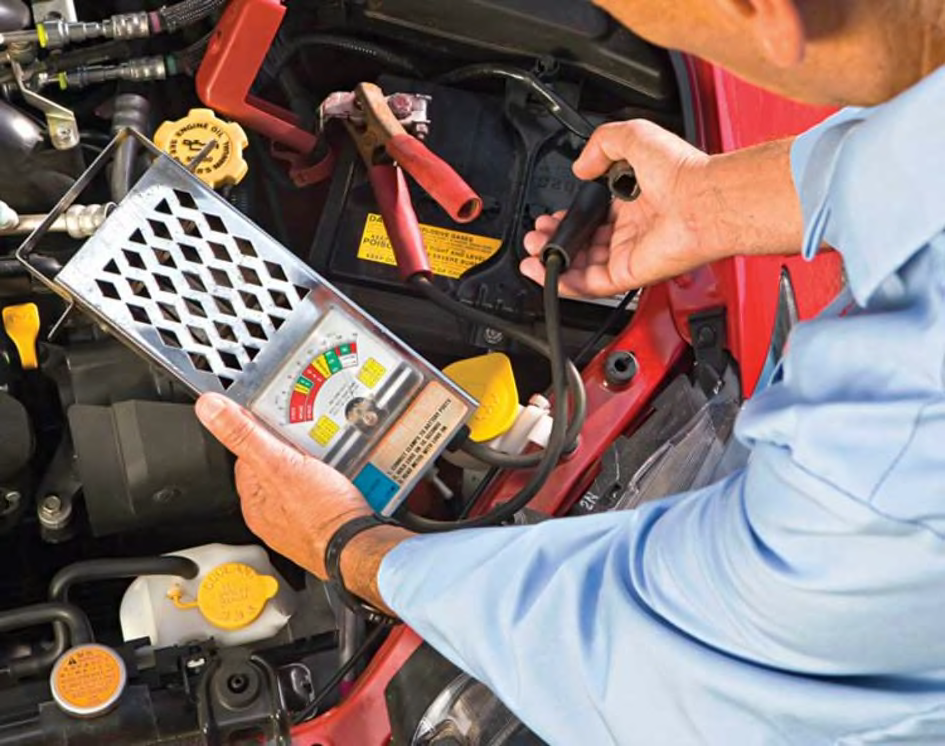
Features and Accessories
These can help you get the most out of your battery and keep it in top working order for longer.
- 1
- / 3

Handle or Loop
A plastic handle or loop makes it easier to lift and carry batteries, which can weigh between 25 and 60 pounds; just as important, it aids in lowering the battery onto the tray in tightly packed engine compartments.
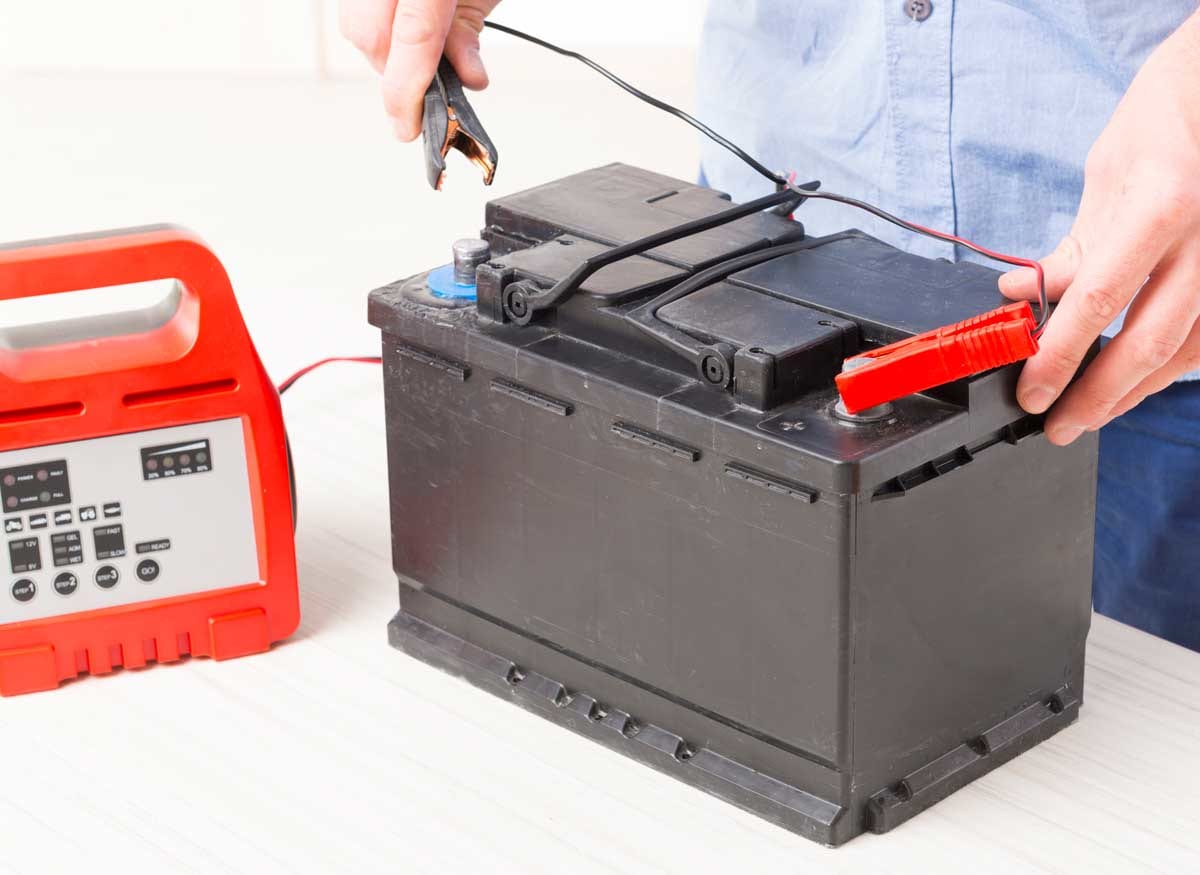
Float/Trickle Charger
If your vehicle is going to be idle for an extended period of time, consider having a float charger to keep it charged. Also known as trickle, storage, or maintenance chargers, these prevent excessive discharge during extended periods when your battery isn’t used. Most have built-in circuitry to prevent overcharging, although some models do not and can damage a battery by overcharging it. Even though a float charger automatically monitors and charges the battery, it is still best to periodically take a look to make sure that everything is still in good working order.
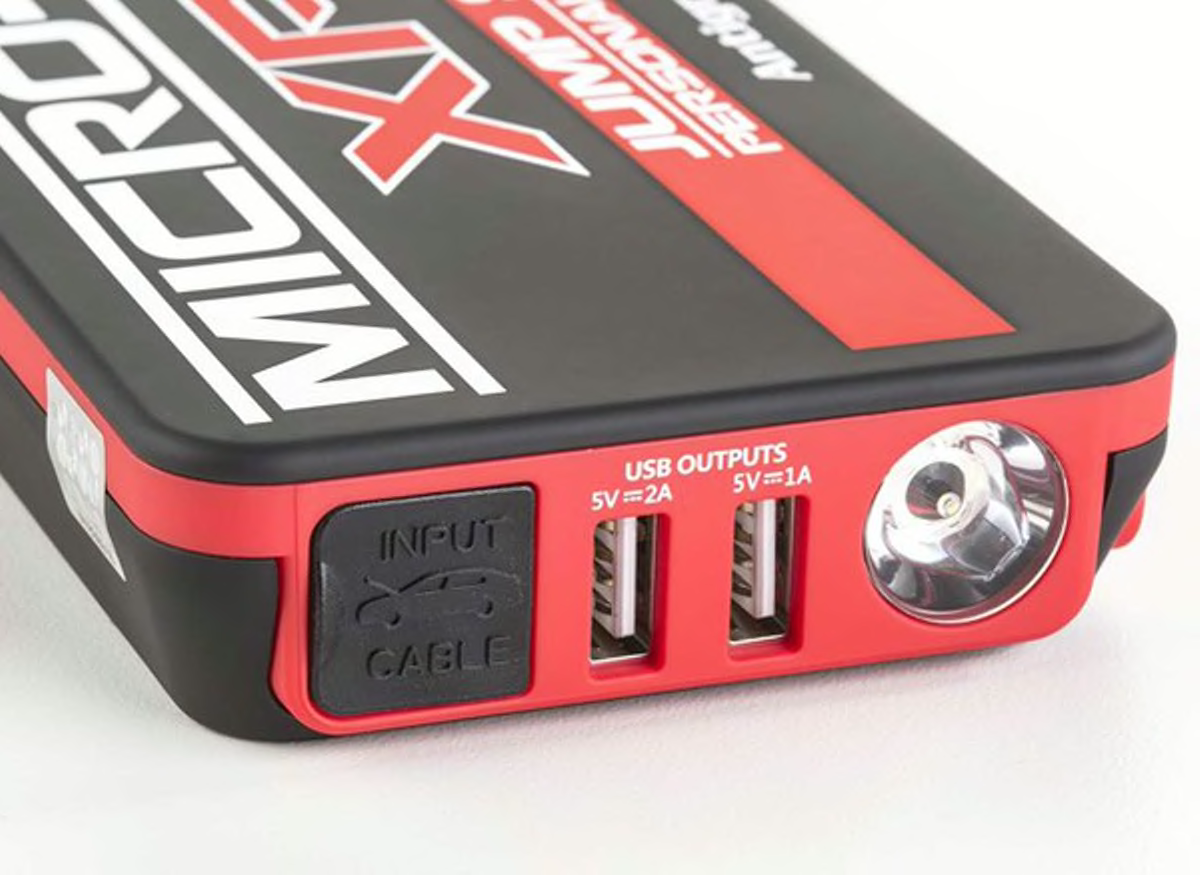
Jump Starter
Portable battery jump starters allow for convenient jump-starts without having to connect two cars. New, smaller models make it easier than ever to include one in your car emergency kit. See our jump starter buying guide for more information.
Handle or Loop
A plastic handle or loop makes it easier to lift and carry batteries, which can weigh between 25 and 60 pounds; just as important, it aids in lowering the battery onto the tray in tightly packed engine compartments.
Float/Trickle Charger
If your vehicle is going to be idle for an extended period of time, consider having a float charger to keep it charged. Also known as trickle, storage, or maintenance chargers, these prevent excessive discharge during extended periods when your battery isn’t used. Most have built-in circuitry to prevent overcharging, although some models do not and can damage a battery by overcharging it. Even though a float charger automatically monitors and charges the battery, it is still best to periodically take a look to make sure that everything is still in good working order.
Jump Starter
Portable battery jump starters allow for convenient jump-starts without having to connect two cars. New, smaller models make it easier than ever to include one in your car emergency kit. See our jump starter buying guide for more information.
Car Battery Brands
Most aftermarket car batteries sold in the U.S. are made by three companies that build them for retailers: Johnson Controls, which supplies more than half of the market; Stryten; and East Penn. They are sold under various names and built to the specifications of retailers, so performance can vary. Most stores will test, install, and match a battery to your car’s needs. Here are the major brands and where they are sold.
ACDelco: Available through service centers and GM dealerships.
AutoCraft: Available at a variety of Advance Auto Parts stores across the country.
Bosch: Available at Pep Boys.
DieHard: Available at Sears and Kmart automotive centers.
Duracell: Available at Sam’s Club.
Duralast: Sold at AutoZone.
EverStart: Available at Walmart stores.
Interstate: Available at a number of auto parts stores, repair shops, and online.
NAPA: Sold through NAPA Auto Parts stores.
Optima: Available at auto parts stores, including AutoZone, Advance Auto Parts, NAPA Auto Parts, and Pep Boys.
Super Start: Available through O’Reilly Auto Parts stores.

















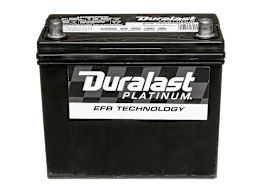




![Exide Marathon Max AGM MXH6L348 [FPAGML348] Exide Marathon Max AGM MXH6L348 [FPAGML348]](https://crdms.images.consumerreports.org/w_263,f_auto,q_auto/prod/products/cr/models/403832-group-48-car-batteries-exide-marathon-max-agm-mxh6l348-fpagml348-10026526)
![Exide Marathon Max AGM MX24F [FPAGM24F] Exide Marathon Max AGM MX24F [FPAGM24F]](https://crdms.images.consumerreports.org/w_263,f_auto,q_auto/prod/products/cr/models/403831-group-24-24f-car-batteries-exide-marathon-max-agm-mx24f-fpagm24f-10026523)
